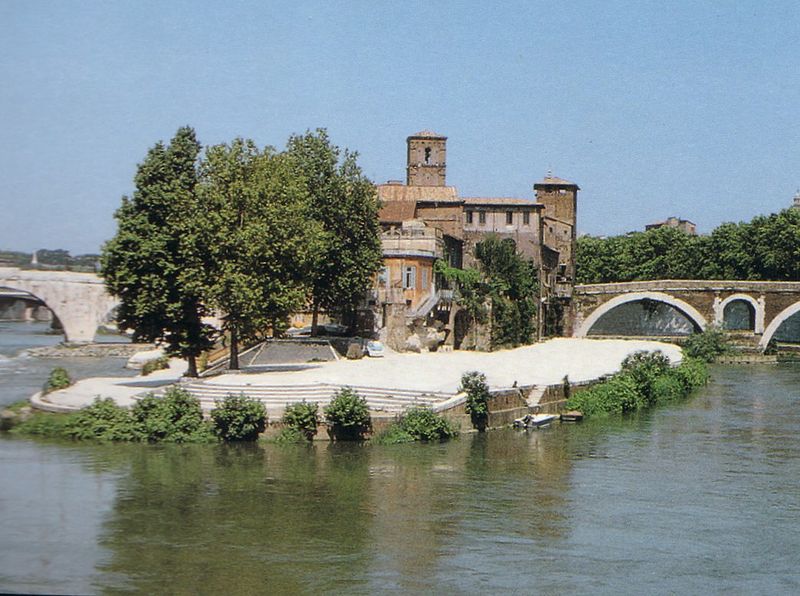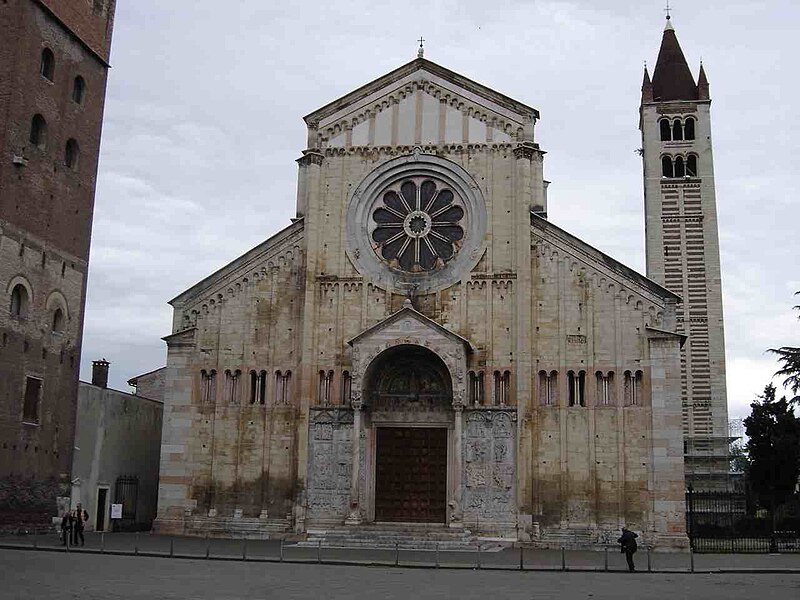 |
| 15th century depiction of the Council of Clermont |
In November
1095, at the Council of Clermont, Urban called for the First Crusade much to the dismay of the Emperor in the east who needed
troops to fend off the Muslim attackers. Now they were to suffer what amounted
to an invasion as a crusade prepared to defend Christian pilgrims in Jerusalem. Guibert of Nogent[i] recorded Urban as saying;
“I ask you to think how your
hearts can conceive of the joy of seeing the holy city revived by your
efforts…..Remember that the voice of the Lord himself said to the church,
"I shall lead your seed from the East, and I shall gather you from the
West."…..Out of the West he assembled us……Jerusalem's losses will be
restored. If the words of Scripture and our own admonitions do not move your
souls, then at least let the great suffering of those who wish to visit the
holy places touch you.”[ii]
Urban was to
rely on Matilda to keep peace in northern Italy while his attention was
focussed on his crusade. She was intent on securing the support of the Lombard
and Tuscan towns for the reformist agenda. Urban agreed to Matilda’s proposal
to expand the see of Pisa to include Corsica, thus rewarding Diambert for his support; in addition Diambert was
promoted to archbishop.
Robert
Guiscard died in July 1085 and he was succeeded as the premier noble in
southern Italy by his brother Roger of Sicily. For his part Roger was determined not to offend the Emperor
in Constantinople. To bring Roger onside Matilda and Urban persuaded Conrad to marry
Roger’s daughter Maximilla.
All Roads Lead to Rome
 |
| Isola Tiberina |
Following a
tour round France preaching the necessity of a crusade, Urban returned to Italy
in November 1096. He met up with Matilda and the French crusaders at Lucca for
a triumphal journey to Rome. Wibert’s involvement in Henry’s disastrous
campaign at Canossa had discredited him as well as the emperor. This aided
Matilda in her campaign to strengthen the north for the reformist cause.
Nonetheless
the Wibertian supporters were still able to control parts of Rome[iii].
But Urban had the support of several powerful Roman families, including the Pierleoni who controlled Isola Tiberina[iv]. In 1094 Urban bribed Wibert’s
governor to hand over the Lateran Palace, a serious blow for the opposition. The palace commanded the
Porta San Giovanni on the city walls.
Wibert’s
supporters still held the Castel Sant’Angelo when Urban returned from his
preaching tour in late 1096. His supporters took control of most of the city; Fulcher of Chartres claimed that Urban was able to take
control of;
‘The whole apostolic power
with the aid of a certain most noble matron, Matilda by name, who was then very
powerful in her native region about Rome.’[v]
When the
crusaders continued on their journey Matilda stayed behind. Given that in 1074
she had wanted to travel to Jerusalem, this failure to join the crusade is
interesting. It has been posited that Matilda did not want to travel in the
company of Godfrey of Bouillon[vi],
one of the leaders of the crusade. But the situation in Italy would not have
allowed Urban to leave his rear unguarded. Although the Alpine passes were in
the hands of reformist supporters Henry was still on this side of the Alps.
Additionally
it was around this time that Matilda’s alliance with her second husband Welf
and his family was falling apart. The marriage was dysfunctional, politically
and sexually. Matilda was apparently a mature and attractive woman while Welf
the Younger was later given the name Welf the Fat. Scandalous rumours of the
couple’s sexual problems abounded. Chroniclers sympathetic to the reforming
cause portrayed the marriage as a sacrifice Matilda endured to protect the
church. By 1096 the Welfs were back in the imperial fold.
A True Church Woman
Matilda’s
voice was now pre-eminent in church matters; when the archbishopric of Milan
became vacant following the death of Arnulf III, the Milanese supported Arnulf IV for the see as he was Matilda’s man.
They rioted in protest against the opposition man Landulf da Baggio[vii],
the chosen of a more extremist group of reformers.
Matilda made
her lands a refuge for reformists; Anselm of Canterbury was escorted to and from Rome[viii]
by her men. Anselm later wrote to thank Matilda for her help. When Bishop Gebhard of Constance arrived in Italy in 1106 Matilda
hosted him at Guastalla, again she provided an escort to and
from Rome, to protect him against attack from Henry’s soldiers. Among other
churchmen safeguarded were Herman, Bishop of Metz and Conrad of Salzburg.
 |
| Pope Paschal II |
Urban
finally gained control of the Castel Sant’Angelo in August 1098. Urban’s death
in July the following year slowed the reformist cause down only momentarily; Paschal II’s election in the August
showed that the reformists did not lose ground by Urban’s death. By 1102
Matilda had a new papal adviser; Bernard degli Uberti who was the abbot of Vallombrosa.
Conrad died
in 1101, five years before his father. Wibert, the antipope had died the year
before and Matilda took advantage of the confusion afterwards to take back some
of her inheritance. In 1101 Matilda undertook a campaign for the return of
Ferrara, undertaking a siege of the city in the autumn. Her allies rallied to
her cause, drawn by her ever-increasing influence in the north of Italy. Even
Venice, which had hitherto held itself aloof from the reforming cause, sent a
contingent according to Donizo.
In 1104
Matilda organised the installation of her adviser Bernard as the bishop in
Parma; this coup, in one of the major centres of anti-reformists, was a great
fillip to Matilda’s reputation. But when Bernard arrived in the city
disaffected citizens threatened to kill him while he was conducting a mass. He
was taken prisoner and when the news reached Matilda she sent an army against
the city. Bernard was set free and was able to take possession of the bishop’s
palace.
Renewing the Fight
 |
| Henry V (L) |
With the
death in August 1106 of Henry IV Matilda and the reformers lost their greatest
enemy. The new Holy Roman Emperor Henry V learned from his father’s failure to
defeat Matilda and he walked a more respectful path, opting for conciliation
rather than confrontation. He visited Matilda at Bianello Henry appointed her
his lieutenant in Liguria and crowned Matilda as Imperial Vicar and Vicereine of Italy. In return she granted him the
inheritance rights over the fiefs disputed by his father. Henry swore that;
‘In the whole earth there
could not be found a princess her equal.’[ix]
Not content with being the main force of the church militant Matilda is reputed to have founded about a hundred churches. Matilda and her mother allegedly built or restored numerous churches, monasteries, hospices, and bridges between the Alps and Rome. Some of the churches that claim support from Matilda include:
- Sant'Andrea Apostolo
of Vitriola, at Montefiorino, Modena
- Sant'Anselmo, Pieve di Coriano[x]
- San Giovanni
Decollato, at Pescarolo de Uniti, Cremona
- Santa Maria Assunta,
at Monteveglio, Bologna.
- San Martino in
Barisano, near Forlì.
- The Abbey at San Zeno, Cerea, Verona.
 |
| Basilica di San Zeno |
It is possible that the foundation of the Church of San Salvaro in Legnago (Verona) was created on Matilda’s orders. Matilda also contributed towards the building of the Duomo in Pisa.
In 1115 the
childless Matilda, now 70 years old, made the Holy Roman Emperor her heir. She
died on 24th July 1115, suffering from gout, at Bondeno di Rancore. Once Matilda was dead Henry and his 14 year old
wife, Matilda of England, made the journey across the Alpine passes to Canossa, to take possession of
Henry’s inheritance.
It must have
been a disappointment to the pope to discover that Matilda had disinherited the
church to leave her vast patrimony to the Holy Roman Emperor. Her inheritance
was disputed and was to be a bone of contention between the papacy, the Holy
Roman Empire and the House of Welf for a long time.
Bibliography
The Making
of Europe – Robert Bartlett, Penguin Books 1994
She-Wolves –
Helen Castor, Faber & Faber 2010
The Military
Leadership of Matilda of Canossa – David J Hay, Manchester University Press
2008
The Holy
Roman Empire – Friedrich Heer, Phoenix Giant Paperback 1995
The Oxford
History of Medieval Europe – George Holmes, Oxford University Press, 2001
Absolute
Monarchs – John Julius Norwich, Random House 2011
The First
Crusade – Steven Runciman, Folio Society 2002
The
Hapsburgs – Andrew Wheatcroft, Folio Society 2004
www.wikipedia.en
[i]
Who claimed to have heard the speech
[iii]
They held a council in the city in 1098
[v]
The Military Leadership of Matilda of Canossa - Hay
[vi]
With whom she had quarrelled over the lands Matilda had inherited from her
first husband Godfrey the Hunchback (see Matilda II)
[vii]
Probably a relative of Pope Alexander II and of Bishop Anselm of Lucca, both di
Baggios
[ix]
She-Wolves - Castor
[x]
In the Province of Mantua.
A remarkable woman
ReplyDelete